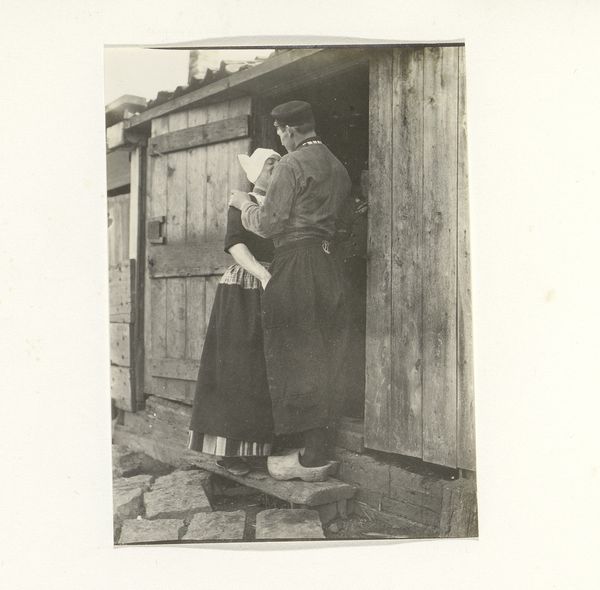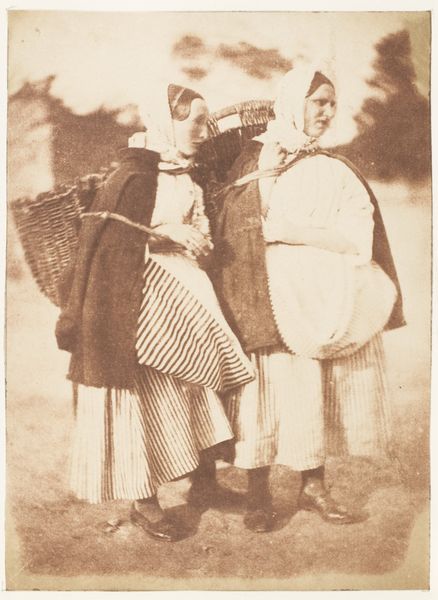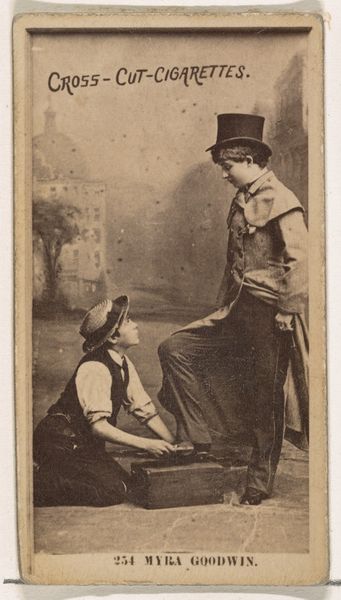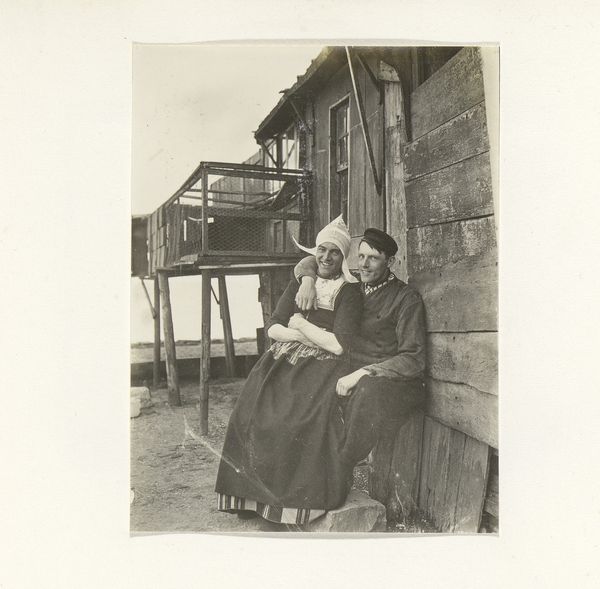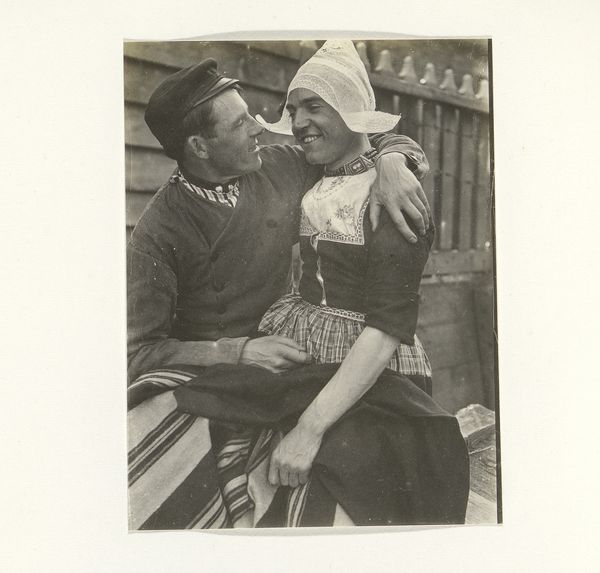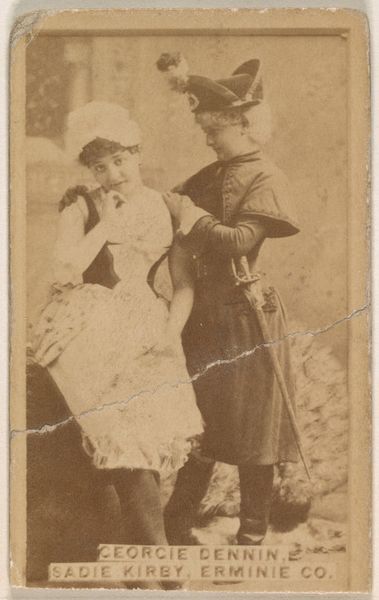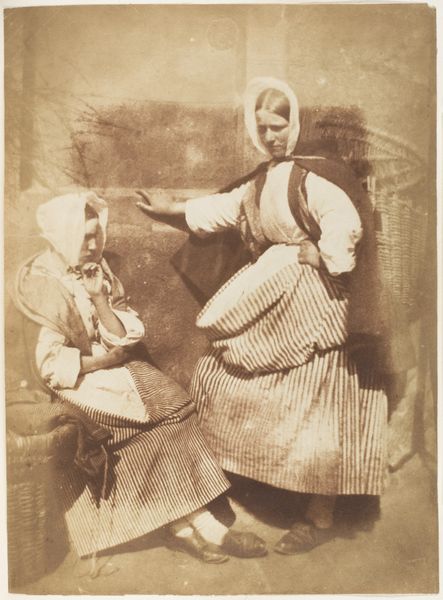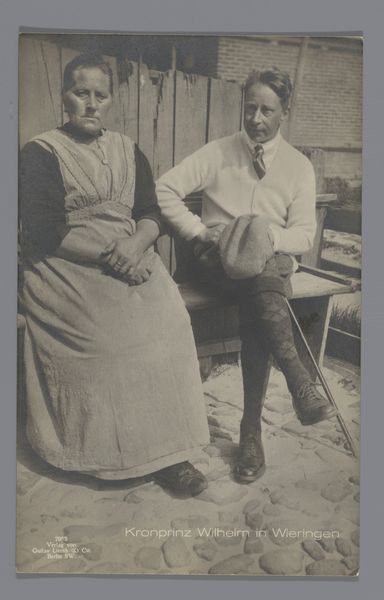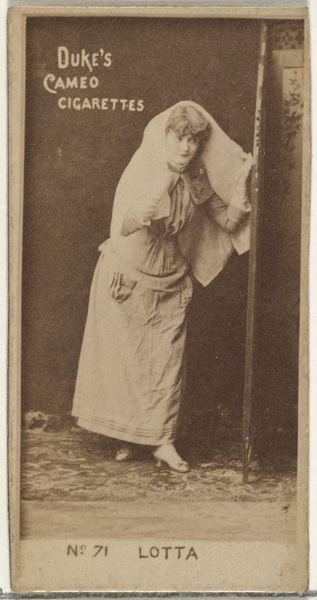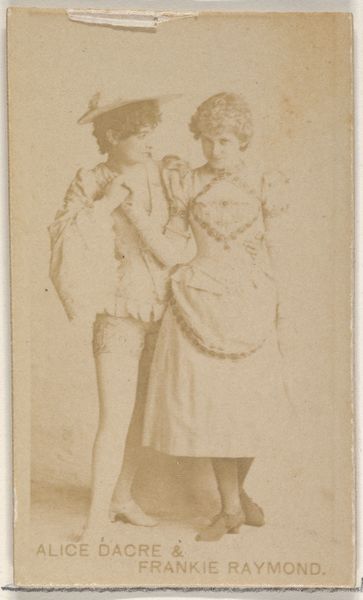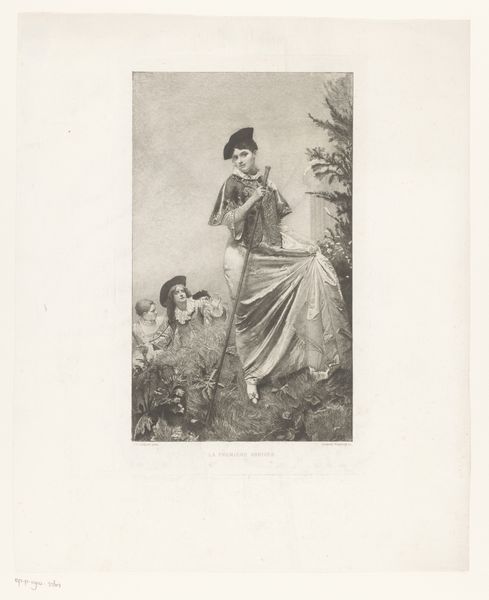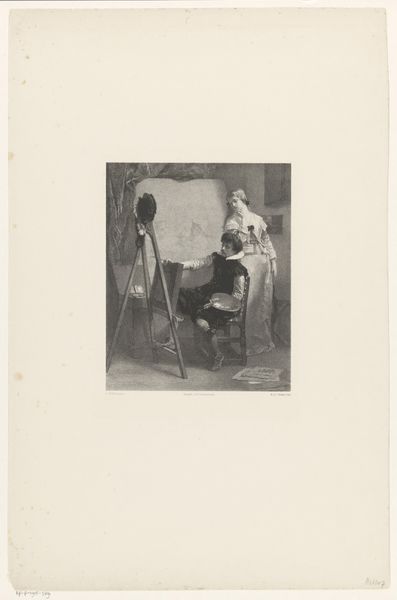
photography, gelatin-silver-print
#
portrait
#
dutch-golden-age
#
photography
#
gelatin-silver-print
#
genre-painting
Dimensions: height 96 mm, width 75 mm
Copyright: Rijks Museum: Open Domain
Curator: G. Hidderley's gelatin silver print, "Twee mannen in klederdracht, onder wie één in vrouwenkleding," created sometime between 1900 and 1910, offers us a fascinating glimpse into a bygone era. What are your initial thoughts? Editor: It strikes me as a somewhat staged scene. There's a performative quality to it, almost like actors playing roles for the camera. I am not quite sure what those roles are yet. Curator: Precisely! Considering it’s a gelatin silver print, think about the processes involved in its creation. The labor in preparing the chemicals, the meticulous work in the darkroom – it was a deliberate act to capture this image. I wonder, too, about the specific context of its making; it looks like a staged genre scene meant for sale, maybe postcards. Editor: That's where the institutional angle becomes interesting. Who was buying these images and why? Were they meant as ethnographic records, humorous snapshots of Dutch life, or something else entirely? The display of traditional costume relates to the construction of Dutchness, doesn’t it? Curator: Definitely. Consider the material realities – the heavy wools, the stiff lace. These garments, handmade likely with significant labor, speak of regional identity and skilled craftsmanship. There’s a stark contrast between this posed, playful shot and the everyday toil associated with those garments. It prompts a conversation about authenticity and staged representation of labor, craft and tradition for leisure and commerce. Editor: And think about photography's relatively recent role. The mass availability of photographic materials influenced and shaped cultural representations of regional identities and allowed it to travel abroad, right? I wonder what people who saw the image decades later or on the other side of the world thought? It definitely plays with ideas about performance and social norms. Curator: Exactly. I mean the simple materiality of this gelatin silver print holds such rich cultural history! Editor: It makes you consider the public life of an image, doesn't it? What can this photographic print, a supposed portrait, tell us about the broader sociopolitical landscape of the early 20th century and Dutch history? Curator: This image gives us a wonderful view into history! Editor: Agreed! Thank you for your illuminating perspective.
Comments
No comments
Be the first to comment and join the conversation on the ultimate creative platform.
